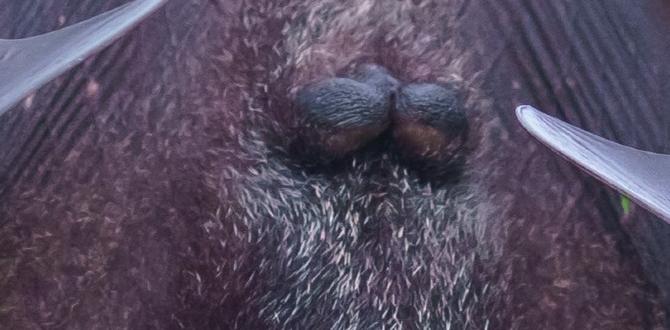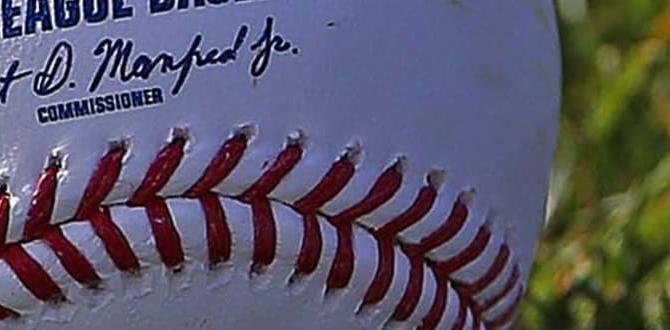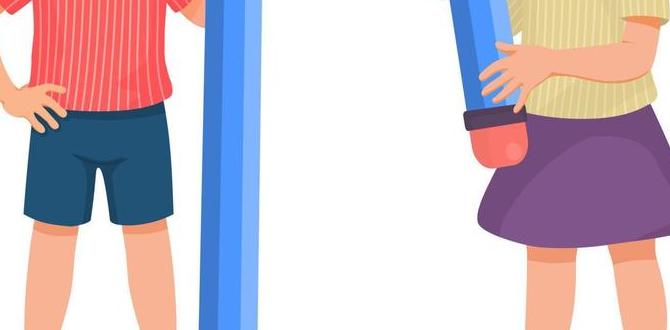A catcher’s helmet for kids is crucial for protecting young athletes from serious head injuries, ensuring they can play safely and confidently. Choosing the right one involves understanding fit, features, and how it works to absorb impact during the game.
Catching in baseball is tough, right? It’s a key position, but it also means you’re right in the action, facing fast pitches and potential foul balls. For young players, staying safe is the most important thing. A good catcher’s helmet is like a superhero shield for their head. It’s not just about looking the part; it’s about keeping them in the game, injury-free. This guide will help you understand exactly what makes a great kid’s catcher’s helmet and how to pick the perfect one.
Why Every Young Catcher Needs a Helmet
Imagine stepping up to the plate. You’ve got a pitcher throwing heat, and you’re trying to block every ball. Foul tips can come fast and hard, and a collision at home plate is always a possibility. Without the right protection, these moments could lead to painful bumps or even concussions. That’s where a catcher’s helmet comes in. It’s designed to absorb the shock of these impacts, keeping the player’s head and face safe.
The National Operating Committee on Standards for Athletic Equipment (NOCSAE) sets important safety standards for protective gear like catcher’s helmets. When you see a helmet that meets NOCSAE standards, you know it has been tested to ensure it provides a certain level of protection. This standard helps parents and coaches trust that the equipment is designed with player safety as the top priority.
The Anatomy of a Catcher’s Helmet
A catcher’s helmet isn’t just a simple shell. It’s a carefully designed piece of equipment with several key parts, all working together to provide maximum protection. Understanding these components can help you make a better choice when buying.
- Outer Shell: This is the hard, protective shell you see on the outside. It’s usually made from tough plastic like ABS or polycarbonate. Its job is to take the initial impact from balls or accidental contact.
- Inner Padding: Beneath the shell is a layer of foam padding. This is super important! It’s designed to absorb and cushion the shock of an impact, preventing it from reaching the player’s head. High-density foam is best for this.
- Throat Protector: Many helmets include an attached or detachable throat guard. This extra piece protects the very vulnerable area of the neck and throat from errant pitches or collisions.
- Cage/Mask: Most youth catcher’s helmets have a built-in cage or mask made of strong steel wire. This protects the face, especially the eyes, nose, and mouth, from direct impacts. The spacing of the bars is designed to offer good visibility while blocking balls.
- Chin Strap: A secure chin strap keeps the helmet firmly in place. It’s essential for ensuring the helmet stays on during a play and doesn’t shift, which could compromise its protective ability.
Choosing the Right Catchers Helmet for Kids: Key Factors
Finding the perfect catcher’s helmet for your young player involves looking at a few crucial things. It’s not just about picking the one that looks coolest. Fit, comfort, and safety features all play a big role.
1. Fit is Paramount
The most important aspect of any protective gear is how well it fits. A helmet that’s too big can slip and not offer adequate protection, while one that’s too small can be uncomfortable and distracting. For kids, this is especially true as they grow.
- Measure the Head: Before you buy, measure your child’s head circumference. Most manufacturers provide sizing charts based on these measurements.
- Try It On: If possible, have your child try on the helmet. It should feel snug but not tight. There shouldn’t be much room for it to wobble or shift when they shake their head.
- Adjustability: Look for helmets with adjustable features, like straps or internal fitting systems. This allows for a more customized fit and can extend the life of the helmet as your child grows.
2. Safety Standards and Certifications
As mentioned, safety certifications are non-negotiable. Always look for helmets that meet or exceed NOCSAE standards. This certification means the helmet has been tested for its ability to absorb impact, offering a baseline of protection against common baseball injuries.
You might see different versions of NOCSAE standards. For catcher’s helmets, look for designations like NOCSAE ND022, which is specific to the performance of head protectors for baseball, softball, and lacrosse catchers. It ensures the helmet can reliably protect against skull fractures and other severe head trauma.
3. Comfort and Ventilation
Kids need to be comfortable to perform their best. A hot, heavy helmet can be a major distraction. Look for helmets with:
- Breathable Padding: Moisture-wicking materials can help keep the player dry.
- Ventilation Holes: Strategically placed vents allow air to circulate, keeping the head cooler during intense games and practices.
- Lightweight Design: While durability is key, a lighter helmet is generally more comfortable and less fatiguing for young athletes.
4. Durability
Kids’ gear can take a beating. A good catcher’s helmet should be built to withstand the rigors of regular play, including frequent impacts from pitched balls, foul tips, and collisions. High-quality plastics and sturdy construction are indicators of durability.
5. Style and Visibility
While safety and fit are paramount, it doesn’t hurt for the helmet to look good too! Many helmets come in a variety of colors, allowing players to match their team’s uniform. Some helmets also feature designs that enhance visibility, which can be an added safety benefit on the field.
Types of Catchers Helmets for Kids
Not all catcher’s helmets are created equal. There are a few main styles you’ll encounter, each with its own set of advantages.
Traditional Catcher’s Helmets (with separate mask)
These are the classic style you often see. They consist of a hard helmet that covers the head, and a separate, detachable or integrated face mask that attaches to the helmet. The mask provides extensive facial protection.
- Pros: Offers robust facial protection, often seen as the “professional” look, can sometimes be more customizable with different mask styles.
- Cons: Can be bulkier, and ensuring the mask and helmet are securely connected is vital.
Hockey-Style Catcher’s Helmets
Inspired by hockey goalie masks, these helmets often feature a fully integrated cage or mask directly into the helmet structure. They tend to offer a very streamlined and secure fit, with excellent visibility.
- Pros: Integrated design means no worrying about parts coming loose, often very comfortable and offer good ventilation, can provide a wide field of vision.
- Cons: May not offer quite as much traditional catcher’s facial coverage as some separate mask systems.
For kids just starting out or playing at younger ages, many coaches and parents prefer the hockey-style helmets due to their all-in-one design and ease of use. They are generally easier to put on and take off, and the integrated protection is reassuring.
Essential Catcher’s Gear for Kids
A catcher’s helmet is a critical piece of the puzzle, but it’s not the only piece of protection a young catcher needs. For a complete protective setup, consider these other essential items:
Catcher’s Mitt (Glove)
This is a specialized glove designed for catchers, featuring a deeper pocket and more padding to help snag fastballs and absorb the impact of thrown balls. It’s designed to work in conjunction with the helmet for full safety.
Chest Protector
This padded vest covers the chest and abdomen, protecting against foul tips and impacts from collisions at the plate. Look for one that fits well and allows for good mobility.
Leg Guards
These are designed to protect the shins, knees, and ankles. They should be securely fastened and offer ample padding. Adjustable straps are a must for a proper fit.
Throat Protector
While some helmets have integrated throat protection, an additional, dedicated throat guard can provide an extra layer of safety. This is especially important for younger players who might be more prone to accidental impacts in that area.
How to Properly Fit and Adjust a Kid’s Catcher’s Helmet
Getting the fit right is paramount. Here’s a step-by-step guide to ensure your child’s catcher’s helmet is safe and effective.
- Measure Head Circumference: Use a soft measuring tape to measure around the widest part of your child’s head, about an inch above their eyebrows.
- Consult Sizing Charts: Compare the measurement to the manufacturer’s sizing chart. Most brands provide these on their websites or product packaging.
- Place the Helmet: Position the helmet squarely on the head. The front rim should sit about one to two finger-widths above the eyebrows.
- Check for Snugness: Gently shake the child’s head side-to-side and front-to-back. The helmet should not move excessively. If it wobbles significantly, it’s too loose.
- Adjust Straps: Tighten the chin strap so it’s snug but comfortable. You should be able to fit one or two fingers between the strap and the chin. Ensure the helmet doesn’t tilt forward or backward easily when the strap is fastened.
- Assess Padding: The inner padding should feel comfortable against the skin and provide a cushioned fit. There shouldn’t be any hard spots poking or pressing uncomfortably.
- Verify Visibility: Have the child look around. The cage or mask should offer a clear, unobstructed view of the field and the pitcher.
- Check for Gaps: Ensure there are no significant gaps between the helmet and the face mask (if separate) or between the helmet edge and the child’s head.
Common Fitting Mistakes to Avoid
- Too Loose: The most dangerous mistake. A loose helmet can slip or come off during a play, leaving the player unprotected.
- Too Tight: While snugness is good, a helmet that’s too tight can cause headaches and be incredibly uncomfortable, making it hard for the child to focus on the game.
- Worn Too High or Too Low: A helmet needs to cover the forehead properly. Wearing it too high exposes the forehead, and wearing it too low can impair vision.
- Ignoring the Chin Strap: A loose chin strap is as bad as a loose helmet. It must be fastened securely every time.
Catcher’s Helmet Maintenance and Care
To ensure your child’s catcher’s helmet continues to provide optimal protection, proper care and maintenance are essential. This isn’t complex, but it’s important.
- Cleaning: Wipe down the exterior with a damp cloth and mild soap. Avoid harsh chemicals, as they can degrade the plastic. For the interior padding, use a gentle cleaner specifically designed for sports equipment or a mild soap solution. Let it air dry completely.
- Drying: Never put a helmet in a dryer or expose it to direct high heat, as this can warp or damage the materials. Always air dry.
- Inspection: Regularly inspect the helmet for cracks, dents, or signs of wear and tear on the shell, padding joints, and cage. Check that all screws and fasteners are tight.
- Storage: Store the helmet in a cool, dry place away from direct sunlight. Avoid storing it under heavy objects that could crush or damage it. A helmet bag can be useful for protection and transport.
- Replacement: If the helmet shows significant damage, has been involved in a major impact, or if the child has outgrown it, it’s time for a replacement. Safety is not the place to compromise.
Understanding Catcher’s Helmet Technology
The design of catcher’s helmets has evolved significantly over the years, incorporating new materials and technologies to improve safety and comfort. One notable advancement is the development of specialized impact-absorbing foams and multi-density padding systems.
Some top-tier helmets now utilize advanced materials that are specifically engineered to dissipate impact energy more effectively. This can include foams with varying densities, where softer foams are used for comfort and harder foams are used to absorb and distribute the force of a direct hit. Brands invest heavily in research and development to create proprietary technologies that offer enhanced protection without adding excessive weight or bulk. For instance, some helmets incorporate advanced liner systems inspired by automotive safety designs, aiming to manage rotational forces as well as linear impacts.
As an example of innovation in protective gear, look at the work done by organizations like the NCAA. While their primary focus is college athletics, the research and testing protocols they have supported often trickle down to influence safety standards and design principles for all levels of play, including youth leagues. Understanding these technological advancements can help you appreciate the engineering that goes into protecting young athletes.
Impact Absorption: How it Works
The primary function of a catcher’s helmet is to absorb and distribute the force of an impact so that less energy is transferred to the player’s head. This happens in a few ways:
- Deformation: The outer shell and inner padding are designed to slightly deform upon impact. This deformation absorbs a significant amount of the energy. Think of it like a car’s crumple zone; it’s meant to absorb the force.
- Dissipation: The materials used, particularly the foam padding, help to spread the impact force over a larger area of the helmet and, consequently, over a larger area of the head. This reduces the focused pressure on any single point of the skull.
- Cushioning: The soft padding provides a cushion that further dampens the shock before it reaches the player’s skull and brain.
This multi-layered approach is what makes modern helmets so effective at preventing serious head injuries.
Table: Comparing Features of Youth Catcher’s Helmets
When you’re shopping around, comparing features side-by-side can be helpful. Here’s a sample comparison of what you might look for.
| Feature | Entry-Level Helmet | Mid-Range Helmet | Premium Helmet |
|---|---|---|---|
| Shell Material | Standard ABS Plastic | High-Impact ABS or Polycarbonate | Advanced Polycarbonate Composite |
| Padding | Single-Density Foam | Dual-Density Comfort Foam | Multi-Density Impact-Absorbing Foam with Ventilation Channels |
| Ventilation | Basic Vents | Good Airflow Design | Optimized Venting for Maximum Cooling |
| Cage/Mask | Standard Steel Wire | Reinforced Steel Wire, Wider Field of Vision | Lightweight Steel or Titanium Alloy, Enhanced Peripheral Vision |
| Throat Protector | Optional/Basic Attachment | Integrated or Secure Attachment | Extended, Ergonomic, and Secure Throat Protection |
| Weight | Average | Slightly Lighter | Lightweight |
| Price Range (USD) | $40 – $70 | $70 – $120 | $120 – $200+ |
What Does NOCSAE Really Mean for Parents?
For parents, seeing the NOCSAE seal on a catcher’s helmet translates to peace of mind. It means the product has undergone rigorous independent testing to meet specific performance standards for protecting against certain types of head injuries. While no helmet can guarantee complete protection against all possible impacts, NOCSAE certification ensures the helmet has been engineered and tested to provide a significant level of safety. It’s a clear indicator that the manufacturer has prioritized safety and adhered to industry-best practices. It simplifies the purchasing decision by providing a reliable benchmark of quality and protection.
FAQ: Catchers Helmet for Kids
Q1: How do I know what size catcher’s helmet my child needs?
You’ll need to measure your child’s head circumference. Use a flexible measuring tape and wrap it around their head about one inch above their eyebrows. Compare this measurement to the sizing chart provided by the helmet manufacturer. Most charts will indicate which hat size or measurement range corresponds to their helmet size, like S, M, or L.
Q2: Is a hockey-style catcher’s helmet safe for baseball?
Yes, many hockey-style catcher’s helmets are designed and certified for baseball use. They offer excellent protection and often a streamlined, comfortable fit. Ensure the





